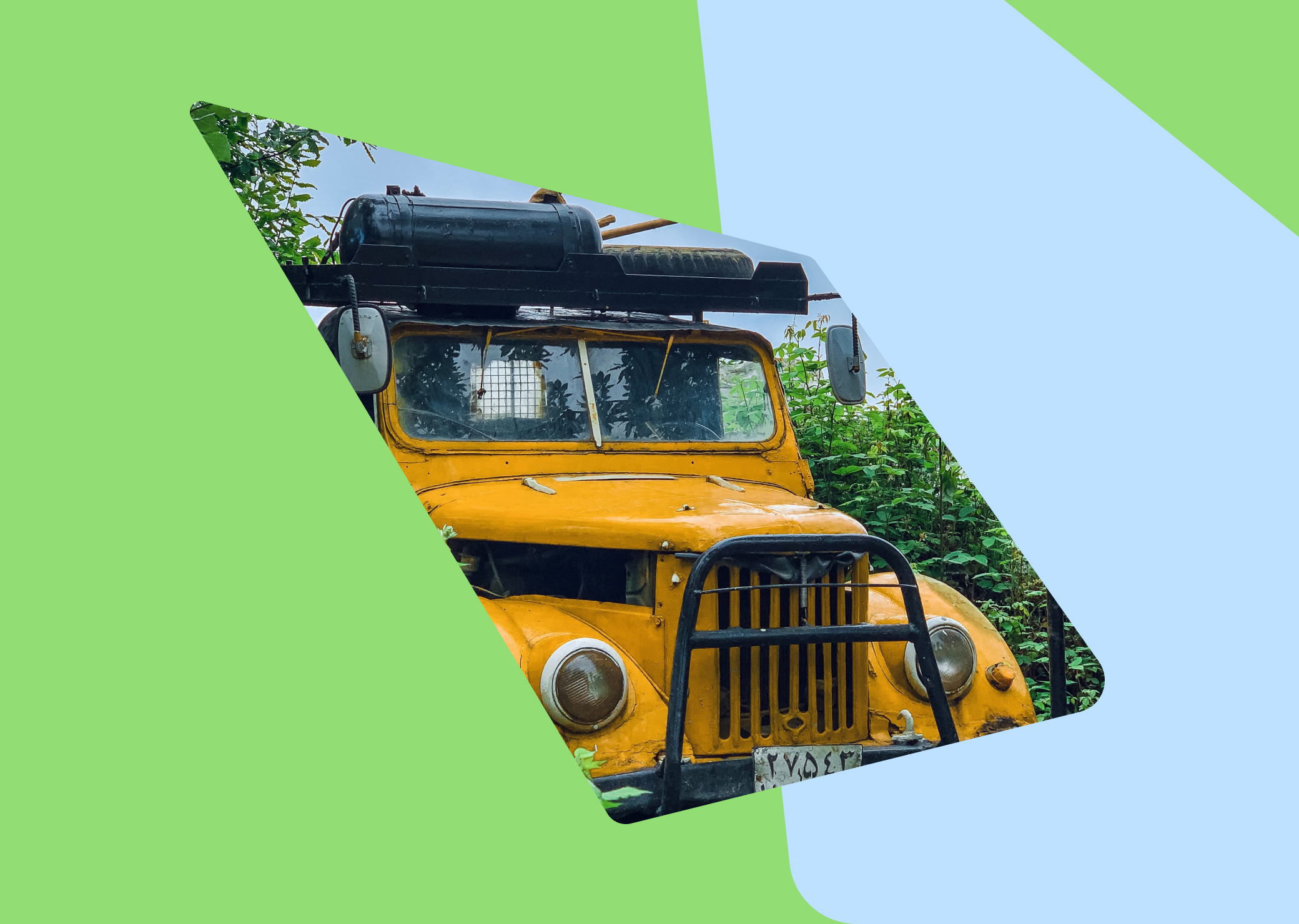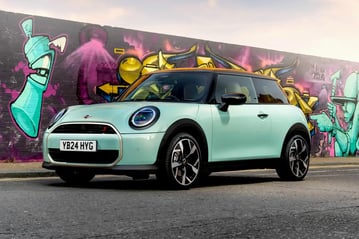- Carmoola
- Blog
- Tips and Advice
- What To Pack in Your Emergency Breakdown Kit
- 🗞 Tips and Advice
- Last updated: Mar 10, 2023
- 9 Min Read
What To Pack in Your Emergency Breakdown Kit
Written by

Verified by


See how much you can borrow in 60 seconds
| Representative Example | |
|---|---|
| Loan amount | £10,000 |
| Interest rate | 13.9% APR |
| 54 payments of | £246 |
| Total cost of credit | £3,284 |
| Option to purchase fee | £1 |
| Total payable | £13,285 |
Breaking down on a journey is one of those unexpected events that can happen to anyone, and let's be honest, it's not something we usually plan for. But maybe we should - what if your car conked out on a long road trip or during your daily commute? Do you have what it takes to handle the situation like a boss? Are you prepared?
Being prepared for the unexpected is not just about having the right gear, but also about having the right attitude. You're not the kind of person who's going to let a little thing like a car breakdown ruin your day, are you? But actually it can knock you a bit off balance. With a car emergency kit, you’ll be able to get through any emergency with ease.
So, if you’re wondering “What should I put in my emergency kit?”, we’ve got you covered. Here’s everything you’ll need to pack in your roadside emergency kit to be prepared for anything…
What is an emergency kit used for?
Having an emergency kit on hand can be a lifesaver in more ways than one. Imagine you're out on a drive, and suddenly you notice that you have a flat tyre or a dead battery. With a breakdown kit at hand, you may be able to fix the problem yourself and avoid being stranded on the side of the road for hours. You might not be able to change the wheel yourself, but at least you will be prepared whilst you wait for help to arrive. Sure, you might get a few laughs if you get stuck in mud or snow, but if you have some basic tools on board, at least you might have a chance of helping to get yourself unstuck!
It's not just the minor inconveniences that you need to prepare for either. Sometimes, more serious breakdowns or accidents can happen. In those situations, an emergency breakdown kit can help keep you and your passengers safe while you wait for help to arrive.
Think about it - what would you do if your car broke down in the middle of nowhere? Would you have the tools to change a tyre, or jump leads to jump-start your battery?
What if you needed to signal for help, or provide first aid to someone injured in an accident? Well with the right tools and equipment in your boot, you can be prepared for anything the road throws at you.
Should I always carry a car emergency kit with me?
Yes, you should always carry your car emergency kit with you. You never know when disaster might strike, and it's always better to be prepared for the unexpected. Whether you're embarking on a long road trip, or just driving to the supermarket, having a car emergency kit on hand can give you peace of mind and help keep you safe in case of a breakdown or other emergency.
So, without further ado, let’s jump into the most important things you’ll need in your car emergency kit. You can also check out our guide for things to always have in your car.
Car Emergency Kit Essentials
What should I put in my emergency car kit? This is one of the most common questions drivers ask when they’re trying to put together a roadside emergency car kit. We’ve taken the guesswork out of what you should pack
Spare Tyre and Jack
It's not uncommon for cars to break down due to flat tyres. Some cars these day have run flat tyres, but most will have a spare in the boot. It's not an easy task to do, but if you're a handy type, changing a tyre might not be a big deal - just make sure you have a road-legal spare, a jack, and the necessary tool to remove the wheel nuts. But even if you don't have the strength to change your tyre you might be able to ask for help. For those who aren't so mechanically inclined, it's important to have reliable breakdown cover instead. Check out our complete guide to breakdown cover to discover everything you need to know.
Mobile Phone
When you're in a bind and need assistance, your mobile phone can be a lifesaver. Make sure it's always ready when you need it by keeping it charged with an in-car, or portable charger. You’ll also want to have the what3words app downloaded and set up on your phone. This handy app can quickly locate your position and provide a simple three-word reference to help first responders find you faster. It will give your location to within just a few metres.
Warning Triangle
Make sure you have a reflective warning sign on hand in case of a breakdown. These triangular signs are used to alert other drivers when your vehicle has broken down, reducing the risk of collisions. Ideally, you should have two signs - one to place at the front of your car and the other at the rear.
Remember to place the signs at least 45 metres (147 feet) behind your car and note that the Highway Code advises against using them on motorways. For obvious reasons you don't want to be wandering around in busy motorway lanes.
First Aid Kit
A first aid kit can help with any minor injuries you or others may suffer on the road. It should include items like sterile cleansing wipes, waterproof plasters in assorted sizes, dressings, scissors, powder-free gloves, and a Revive-Aid resuscitation face shield - or a similar product.
Fire Extinguisher
When you're out on the open road, it's always better to be safe than sorry. That's why a compact fire extinguisher is a must-have for any car emergency kit you put together. Just be sure to choose a model that meets all the necessary safety standards and is easy to use in case of an emergency.
Empty Fuel Carrier
Running out of fuel is a common reason for breakdowns, and it's never a pleasant experience. If you find yourself in this situation and you know there's a petrol station within walking distance, a carrier full of fuel could be just what you need to get back on the road. This simple but effective solution can help you avoid the inconvenience and expense of having to call for assistance or wait for a tow truck.
Warm Clothing and a Waterproof Jacket
If you experience a breakdown, you may need to leave your car and wait outside in the elements for an extended period. This is especially true if you break down on a motorway, where it's safer to exit your vehicle and stand behind the crash barrier. But even if you are stuck in a traffic queue in the winter it can get very cold if your engine is off. To stay comfortable and safe, consider packing a few extra layers of clothing for warmth, plus a blanket in winter. An umbrella is not a bad idea too if you have to get out of your car in the rain on a motorway.
Having warm clothing to change into is especially important during those cold winter months. Don’t forget to check out what to have in your winter breakdown kit on our essential Winter driving checklist.
Food and Water
The thought of being stranded on the side of the road for hours on end in terrible weather is nothing short of bleak - and if you're feeling hungry, it can be downright miserable! For this reason, food and drink should be considered essential items to include in your car breakdown kit. Make sure you pack a big flask of your favourite hot beverage, alongside a variety of snacks.
Hi-Vis Vest
If you need to leave your vehicle in the dark, it's critical that other motorists can see you. A high-visibility vest should be considered one of the most important emergency items to keep in your car. With this simple piece of gear on hand, you can help ensure that you're visible to other drivers and reduce the risk of accidents or collisions.
Torch
Picture this: you're stuck on the side of a dark, deserted country road on a chilly winter evening with a dead car battery. It's a scary thought, and without any light, it can be downright dangerous. Stay safe by packing a large torch with spare batteries in your breakdown kit. You can also use a wind up torch if preferred. Yes you might have one on your phone but you don't want to waste your phone battery in these circumstances.
Jump Leads
Flat or dead batteries can strike at any time, but they tend to occur more during cold weather. It’s always worth keeping a set of jump start cables or jump leads in your car at all times. These handy tools can kickstart your battery and get you back on the road in no time.
Spare De-Icer, Screen Wash, and Scraper
It's incredible how fast your windscreen can turn into a muddy mess without a regular spritz of screen wash, especially during the winter months. You should always keep a spare bottle of screen wash in your car. Similarly, it’s worth carrying de-icer and a scraper in your vehicle.
Snow Shovel
If you're planning a winter road trip, it's worth considering keeping a shovel in your car. In the event that you encounter snowy roads, a shovel can come in handy for clearing a path and getting unstuck. It can even help if you end up stuck on a muddy track.
A Map
When it comes to preparing for a car breakdown emergency, a map can be an essential tool to have in your kit. While many people rely on GPS or their smartphones for navigation, it's important to remember that these devices can lose signal or run out of battery, or even not work in a remote location, leaving you stranded without directions.
A physical map can provide a reliable backup in case of a technology failure, allowing you to navigate to safety or find the nearest petrol station or mechanic. It's also useful if a road is closed and you have to find another route.
Battery operated or wind up radio
If your car does break down you might lose access to your radio. You’ll need to save as much power on your mobile phone as possible, which means you’ll have no way of staying connected to the media. A battery operated or wind up radio lets you hear exactly what’s going on, plus it can help keep you entertained while you wait for help to arrive.
Takeaways
Like a good boy scout or girl guide - be prepared! Don’t wait until it's too late and you experience a breakdown or accident. Keep a roadside emergency car kit with you to stay safe and prepared for whatever the road throws at you.
If your car regularly breaks down, it could be time to invest in a new one! With Carmoola, you can get the finance you need to switch vehicles in no time. Be sure to calculate your budget now to see how much you could spend on a more reliable ride.
See how much you can borrow in 60 seconds
| Representative Example | |
|---|---|
| Loan amount | £10,000 |
| Interest rate | 13.9% APR |
| 54 payments of | £246 |
| Total cost of credit | £3,284 |
| Option to purchase fee | £1 |
| Total payable | £13,285 |
Related articles
What Are the Top 5 Used Car Websites in the UK?
Thanks to the internet, searching for a used car in the UK is easier than ever before. You can simply head online, visit a used...
What Is GMFV in PCP Car Finance? Guaranteed Minimum Future Value Explained
GMFV, or Guaranteed Minimum Future Value, is the amount your lender estimates your car will be worth at the end of your PCP...
Does Financing a Car Build Your Credit?
Financing a car can build credit when you make payments on time, but it can damage your score if you miss payments or take on...

.webp?width=832&height=592&name=customer-support%20(1).webp)










.webp?width=400&height=285&name=online-shoppers-with-dog%20(1).webp)


.jpg?width=500&height=356&name=Vintage%20car%20going%20to%20an%20old%20town-1%20(1).jpg)





